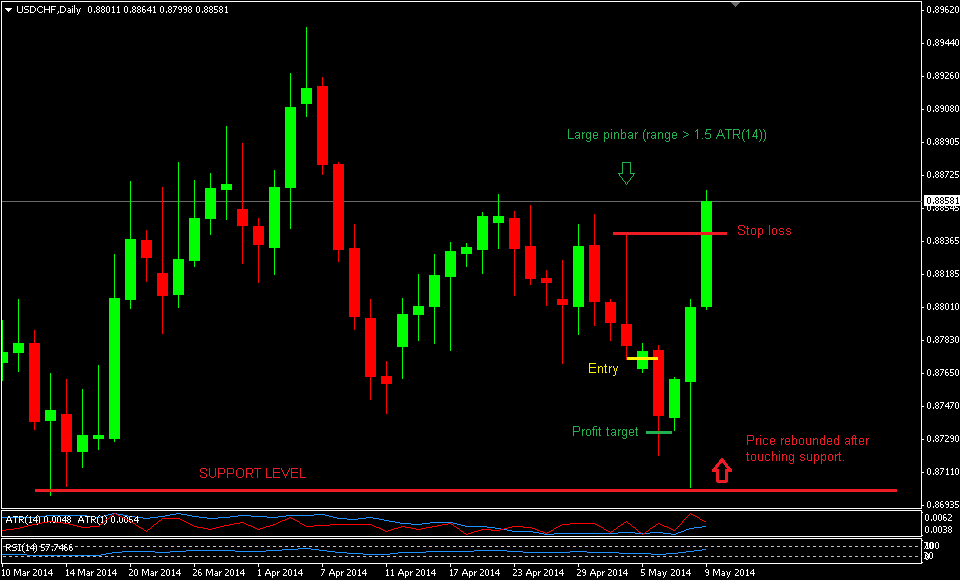Got out at breakeven this week. Lost a trade and then won a trade that cancelled the loss.
TRADES
GBPCAD
My live call on the GBPCAD didn't work. I went long on the formation of this large pinbar, but price didn't move up that much after I entered. Got stopped out on the third day of the trade.
USDCHF
Saw a low volatility candle on Thursday morning and went long on the break of the candle's high. I didn't know how high it would go so I stuck with my Hermes trading system's rules and took profit at 0.5R.
Price also came within 0.2 pips of triggering my short on the same day. Thankfully it didn't, as I would've lost that trade.
MY VERY FIRST CARRY TRADE
(warning: maths heavy)
This is probably the most important trade for this week. I opened my first long-term position trade on the USDHKD. The USDHKD has been hovering very close to 7.75000, which is a support level traditionally defended by the Hong Kong central bank (the HKD is pegged to the USD, and the lower band of this peg is 7.7500). You can find more info on the USDHKD peg
here or
here.
The anatomy of my trade is below (click to enlarge).
My reward is about 2.25R. Since I set my stop loss below 7.75000, there's very little chance of it being taken out. From what I read, the HK central bank is more than willing to continue the peg.
As icing on the cake, long positions on the USDHKD receive positive carry, so this qualifies as a medium to long-term
carry trade. My broker currently offers a positive overnight swap of HK$2.10 per HK$100,000 (or 1 lot).
Making HK$2.10 per day doesn't seem alot. Over a year, that's HK$766.5, or a meagre 0.76% return on HK$100,000. That's a pathetic return, wouldn't you say?
If you add leverage into the equation, it changes. I'll give my own trade as an example.
In this case, I bought 7 lots, (HK$700,000), using leverage with a part of my account as margin. I placed my stop loss so my equity at risk is only $450. With 7 lots, I'd receive HK$2.10 * 7 = HK$14.70 per day, which would convert to around $1.90 per day.
Over a year ($1.90 * 365), I'd earn $692 in interest just from risking $450. That's a return in excess of 150%. It would take about 236 days before I earn enough interest to cover the $450 risk, after which the carry trade becomes nearly risk-free.
SYSTEM DEVELOPMENT
Some very good news in this area. I did some analysis on my double-top / double-bottom data and filtered trades by weekday. For some reason, signals on Monday performed really well. I did more backtesting and have gone through about seven currency pairs. Sample size is 642.
This is the equity curve using $10,000 initial balance, 2% risk per trade, reward-to-risk 3:1.
This is looking very good, although the drawdown in the last few years is of some concern. Will post further updates if I find anything interesting.










